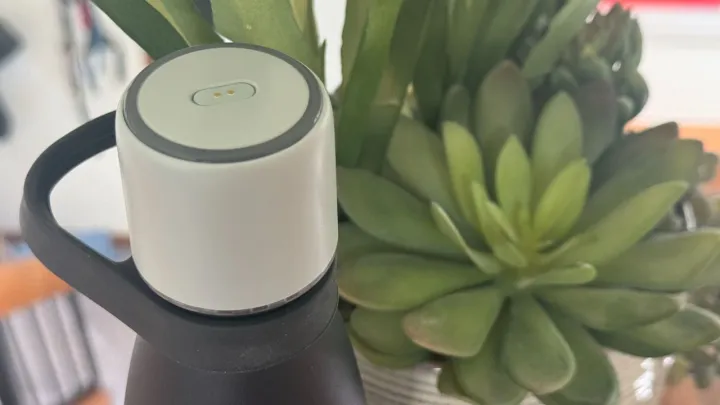
Smart water bottles never seemed like a necessity to me. Instead, I assumed they were overpriced gadgets that didn’t do enough to warrant their price tags. But after checking out the Water.io smart water bottle, I’m starting to change my tune. Let me be clear — I still don’t think everyone needs to rush out and buy a smart water bottle. However, if you’re a fitness enthusiast or trying to cut back on your soft drink consumption, they might be a good fit.
Just smart enough

Though they may be called a smart water bottles, most of these products don’t actually sync with smart home platforms like Google Home and Apple Home. Instead, they’re “smart” by way of a mobile app. That holds true for the Water.io water bottle. It’s in the app that you’ll enter information such as your height and weight, allowing the water bottle to set a target hydration goal for you. With that done, setting up the Water.io is largely complete.
The sole purpose of this smart water bottle is to ensure you’re drinking enough water throughout the day. And, much to my surprise, I was impressed at how good it was at tracking my drinking habits. Not only would it illuminate the bottle cap in various colors to remind me to drink, but it would also light up orange if I was behind my goal and green if I was on track. These visual reminders do a great job of reminding me to step away from the keyboard and take a swig of water.
They also make it more fun to drink water than a regular cup, and it’s actually helped me cut down on sugary drinks since I’ve started testing it.
The Water.io bottle does a solid job of tracking water consumption, but my favorite feature is its support for Garmin. This lets it sync with my smartwatch to automatically adjust my hydration goal based on my workout. For example, if I go for a strenuous run, I’ll see my hydration goal bumped up significantly. This is the big draw of the water bottle for me, as it ensures I don’t underhydrate after a long day of trail running — especially when it’s hot outside. And if I decide to have something to drink beyond water, I can manually enter my beverage into the Water.io app to keep it apprised of my hydration status.
It would have been nice if the bottle synced with smart home platforms like Google Home so I could quickly see my hydration stats without having to install yet another app on my phone, but at least the companion app is easy to use and intuitive.
Not for everyone

Smart water bottles are much more expensive than your typical HydroFlask, and they’re certainly not a good choice for everyone. The Water.io bottle I tested clocks in at an astronomical $100, but it’s often on sale for $70. That’s a hefty price to pay for a water bottle, though its smart features have definitely helped me drink more water after workouts and cut down on my soda consumption.
Aside from tracking your water intake and adjusting your hydration goal based on your daily activities, this is a pretty standard water bottle. It feels about as premium as “regular” high-end products like HydroFlask and Yeti, featuring double-walled stainless steel construction, a leak-resistant seal, and a BPA-free cap.
Considering you can get a great “non-smart” water bottle for less than $40, I still don’t see smart water bottles as anything other than a niche product. I certainly see their appeal — and I’ll be using one for the foreseeable future — but if you don’t work out consistently or don’t need its fun features to help you cut down on sugary drinks, then consider sticking with something cheaper.



